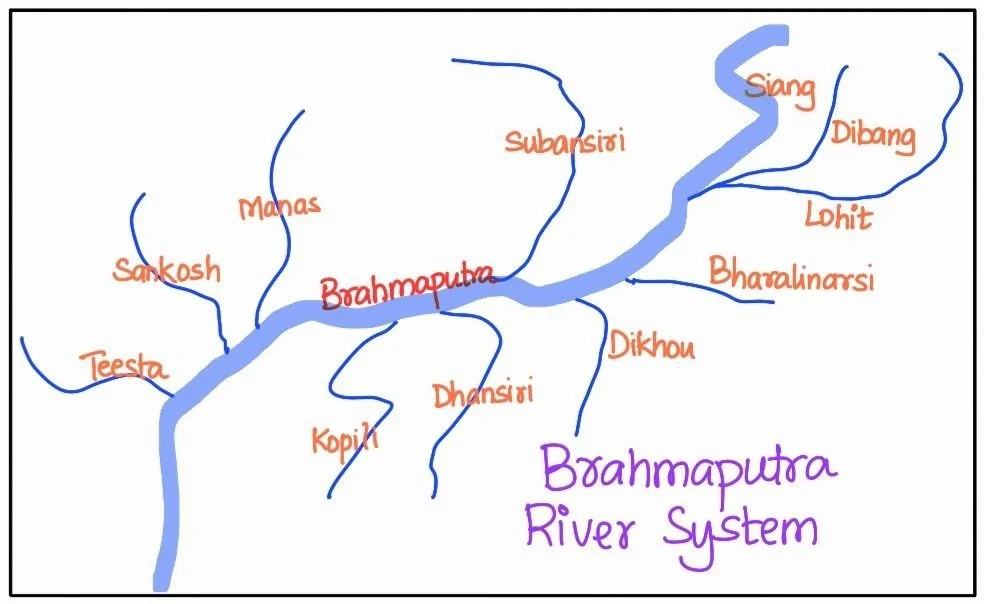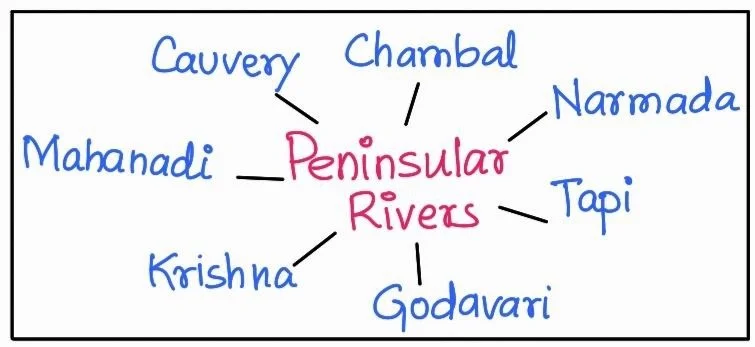![]() 20 Jun 2024
20 Jun 2024
The Brahmaputra River, one of the largest rivers globally, originates from the Chemayungdung glacier in the Kailash range near Mansarovar Lake.

|
POINTS TO PONDER Prominent rivers of Peninsular India like Godavari, Krishna and Kaveri flow towards the East into the Bay Of Bengal. What do you think are the reasons behind this? However, there is also a paradox of some west flowing rivers, prominent amongst which are Narmada, Tapi etc. Can you figure out the reason for this? |
|---|

Three major geological events in the distant past have played a crucial role in shaping the present drainage systems of Peninsular India:
These geological events have had a profound impact on the flow patterns and characteristics of the rivers in Peninsular India.
|
POINTS TO PONDER The Indian landscape is rich and blessed with adequate water resources. Despite this India has continued to be a water stressed Nation for about a decade now. What can be the causes of this? Is the regional variation in water distribution the cause or is low water use efficiency the determinant factor? To what extent do you think that Inter-linking of Rivers can prove to be a solution? |
|---|
Godavari River: The Mighty Flow of the Deccan Plateau
Kaveri River: Flow from the Brahmagiri Hills
|
Do You Know? The river Kaveri makes the second biggest waterfall in India, known as Shivasamudram Falls. The hydroelectric power generated from the falls is supplied to Mysuru, Bengaluru and the Kolar Gold Field. |
|---|
| Must Read | |
| Current Affairs | Editorial Analysis |
| Upsc Notes | Upsc Blogs |
| NCERT Notes | Free Main Answer Writing |
<div class="new-fform">
</div>